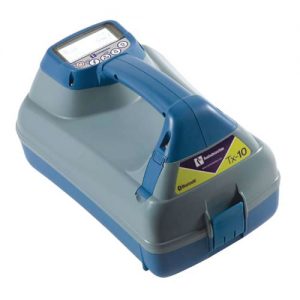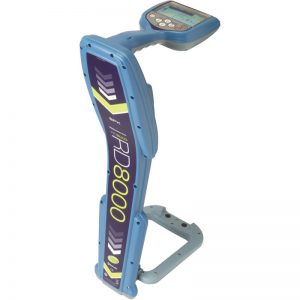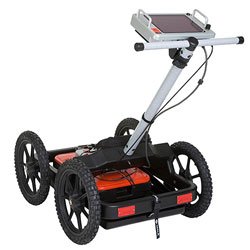19 Apr Hiring an Underground Service Locator – What you should know
Hiring an Underground Service Locator – What you should know
What is an Underground Service Locator?
An underground service locator is a professional tradesperson who uses advanced equipment, industry training and construction knowledge to detect and identify underground pipes and cables.
Also known as:
- Utility Locator
- Pipe Locator
- Cable Locator
- Line Locator
- Ground Penetrating Radar (GPR) Technician
- Underground Service Marking
- Underground Service Detection
- Underground Service Mapping
How do they find the pipes and cables?
There are two primary techniques and hundreds of secondary techniques that underground Service Locators employ to detect underground services.
Electromagnetic Pipe Locator:
This is a two piece set of equipment that can perform many complex tasks and is used for the lions share of underground locating. It consists of:
 Transmitter:
Transmitter:
Which transmits an electro magnetic signal at a specific frequency into any conductive (steel, copper etc) material that you connect it to. The signal can be connected directly, via metal clamps, or indirectly inducted onto the service via induction clamps or sitting the transmitter on top of the ground where it can transmit the signal directly down through the ground and into any conductive service beneath it.
 Receiver:
Receiver:
Which is tuned to the exact frequency that has be sent along the service from the transmitter. They then walk around with the receiver looking for where the signal is the strongest. Using different and specific frequencies from the transmitter allows the service locator to isolate one underground service among many and overcome a myriad of environmental interferences that can throw off an inexperienced locator.
 Ground Penetrating Radar (GPR)
Ground Penetrating Radar (GPR)
GPR is an antenna, usually mounted on a wheeled cart, that pulses radar waves down into the ground and detects when they bounce back up after hitting subsurface structures (pipes, rocks, tree roots etc). One way to think of it is like a fish finder (though infinitely more expensive) for underground rather than underwater. This method is typically used where the electromagnetic pipe fails, with non-conductive pipe materials like plastic (PVC and Polyurethane).
How do I know if I need one?
If you are digging or penetrating the ground in any way in an area where underground services are present then you are responsible for protecting them.
Private Areas
Now, that responsibility could be to yourself if you are only digging inside your own property and they are private services. You must keep in mind that it is common for mains (public services) to run underground through your property too.
Sometimes if you’re working around private services on your own property it might not be a big deal if you damage your underground service because you can just get them repaired if an accident happens. Just be certain that they’re not underground power or underground gas which can cause serious injury to workers when damaged.
Public Areas
If you’re not just digging around private services in your private property, you are responsible for protecting them on behalf of the public, private business, organisations and public services such as universities, hospitals and phone towers that rely on the underground services to operate.
If you interrupt a service that somebody else relies on, and you haven’t taken appropriate steps to protect it, then you will be legally held accountable and be liable for damages for financial losses to those whose service was interrupted. If somebody is injured or killed from the incident then you will likely be responsible for that as well.
 How much do they cost?
How much do they cost?
Underground Service Locators typically charge at $140-$200 per hour and like most trades charge a minimum call out fee, likely 2 – 4 hrs.
For locating at a normal residential property, for example to detect where services cross the front boundary where you are building a new fence, it is generally quick and simple job for an experienced locator and would take less than 2 hours.
For locating in a public area or a industrial or commercial setting there are a lot more factors to consider so contacting for a tailored estimate is your only option.
Can I do anything to make it cheaper?
Anything you can do to make a locators life easier will expedite the whole process. So doing the following things to prepare can help save you time and money:
- Submitting a Dial Before You Dig request ahead of time to allow for all the asset owners to respond
- Clearing any building materials or waste from key areas where a service locator will need to access
- On or around pits, valves, meters, switchboards or any place a locator will be able to physically access a service
- Request and gather any private underground service plans that may exist. This can be:
- As built plans from contractors who have installed underground services in the past.
- Scanning results from previous underground service locators
- Service plans kept by administration, facility maintenance, landlords or property managers of organisations, buildings or campuses.





No Comments